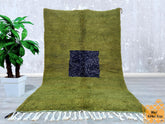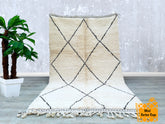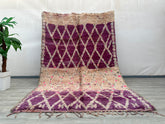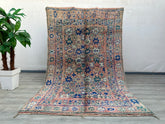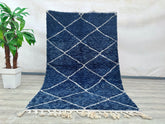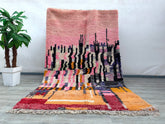The Art of Moroccan Rug Weaving: Techniques and Tools.
Moroccan Rug Weaving: A Testament to Berber Craftsmanship and Cultural Heritage
Moroccan rug weaving is an ancient art form that beautifully showcases the rich cultural heritage and skilled craftsmanship of Morocco’s indigenous Berber tribes. Each rug is a unique piece of art, reflecting the personal story and tribal traditions of its weaver. In this article, we explore the intricate techniques and traditional tools that define Moroccan rug weaving, offering insights into why these hand-woven treasures are highly prized in the global decor market.
Historical Roots of Moroccan Rug Weaving
Moroccan rug weaving has deep historical roots, dating back centuries to the Berber tribes. These rugs were initially created for practical purposes such as bedding, seating, and even burial shrouds. Over time, this practical craft evolved into an artistic expression, with weavers incorporating symbolic designs that conveyed tribal stories, beliefs, and personal experiences.
Weaving Techniques
Moroccan rugs are made using several distinctive techniques, each contributing to their unique beauty and durability.
Knotting
The primary technique in Moroccan rug weaving is knotting. There are two main types of knots:
-
Berber Knot: Also known as the symmetrical knot, this technique involves tying the knot around two warp threads, creating a strong and durable weave.
-
Kilim Weaving: This is a flat weave technique with no pile, commonly used for lighter rugs or prayer mats.
Looping
Some Moroccan rugs, particularly those from the Middle Atlas region, feature a looped pile, giving them a textured surface that is both visually striking and comfortable underfoot.
Traditional Tools Used in Moroccan Rug Weaving
Moroccan weavers use traditional tools passed down through generations, which are essential to the rug-making process.
The Loom
The backbone of Moroccan rug weaving is the loom. Horizontal looms, commonly used by Berber tribes, are made from local wood and materials. These looms are simple in construction and can be easily assembled and disassembled, making them ideal for the nomadic lifestyle of many tribes.
The Beater
A heavy wooden comb called a beater is used to pack the wefts tightly after each row of knots, ensuring that the rug is compact and that the patterns are clear.
The Scissors
Scissors are used to trim the pile of the rug, ensuring even thickness throughout the rug. This tool is key in giving Moroccan rugs their distinct texture.
The Shuttle
The shuttle is used to carry the weft thread through the warp threads, helping to speed up the weaving process and maintain tension within the weave.
The Dyeing Process
Moroccan rugs are famous for their vibrant colors, which come from natural dyes. Plants, minerals, and even insects are used to create a wide range of rich hues. Each tribe has its own dye recipes, often kept secret and passed down through generations, ensuring that every rug’s color palette is unique.
Significance of Patterns and Designs
The patterns and designs in Moroccan rugs are deeply symbolic. Weavers often use motifs that represent their life experiences, wishes for fertility, longevity, and protection. Common motifs include geometric shapes, lines, and symbols representing natural elements such as rivers, mountains, and animals. Each design has specific meanings, intentionally chosen by the weaver.
The Timeless Art of Moroccan Rug Weaving
The art of Moroccan rug weaving is a true reflection of the creativity, skill, and cultural depth of the Moroccan people. These rugs do more than simply decorate homes—they weave stories of life, heritage, and resilience into every fiber. By understanding the techniques and tools involved in their creation, you gain a deeper appreciation for these beautiful artifacts. Explore our collection to discover an authentic hand-woven Moroccan rug that brings timeless beauty and storytelling into your living space.
Featured Products
155 x 247 cm = 5.1 x 8.1 ft Diamonds Blue Soft Dots Berber Runner Rug - Handmade Moroccan Wool, Minimalist Design, Vintage Style, Perfect for Weddings & Bohemian Decor
- $599.00
$1,830.00- $599.00
- (-67%)
- Unit price
- / per
171 x 279 cm = 5.6 x 9.2 ft Colorful Abstract Moroccan Runner Rug - Handmade Berber Wool, Minimalist Design, Vintage Bohemian Style, Perfect for Weddings & Decor
- $599.00
$1,830.00- $599.00
- (-67%)
- Unit price
- / per
- Beni Ourain
- Beni Ourain rug
- Berber rug
- Berber rug history
- Custom Area Rug
- Custom Beni Ourain Rug
- Diamond patterns rug
- Hand-woven rugs
- Handmade rug imperfections
- how to
- Modern Beni rugs
- modern moroccan rug
- Moroccan heritage
- Moroccan rug
- Moroccan rug authenticity
- morrocan rug
- Neutral hue rugs
- Plush area rug
- Rug craftsmanship
- Rug interior alignment
- Timeless rug designs
- Traditional rug design
- white beni ourain
- White wool rug
